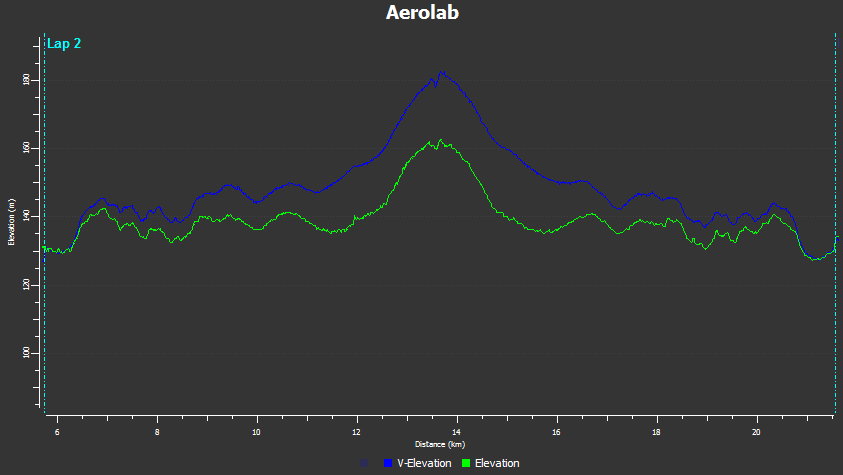sna_b wrote:
Good catch, I definitely did not climb that much. This loop does have a false flat but nothing close to a climb. I do have an old file (same loop, more laps) i pulled from the 500 and directly put into GC, it looks better...but i'd love to hear what your expert eye sees.Ah, yes, that looks more reasonable. OK, I'm thinking that passing it through an "altitude correction" caused the problem. You may still be able to upload to TP and then on to GC (though I prefer to go directly to GC) but don't do that altitude correction thing. It's also possible that some of that is due to GPS speed rather than a wheel speed sensor, but a large part of it seems like that altitude correction wasn't correcting right.
Quote:
The 2 shots below are the same loop just with "constant alt" checked and unchecked. So, if i was using this file, would i match up the VE with the V and level the start/finish points of the VE to give me the cda#? does the .2453 look correct?
I only use the "constant altitude" checkbox when I know it's absolutely constant altitude, like on a velodrome. Otherwise, I leave it unchecked.
I think .24 is probably in the right ballpark, though the exact CdA will depend on getting the exact Crr correct. There are protocols you can use that might make it easier to "pry apart" the CdA and Crr, but they require that you really do have everything else carefully measured (for example, you want to make sure you have a separate speed sensor and aren't using GPS for speed, and you'll want to make sure you're using the correct wheel diameter, etc.). For now, I'd suggest just getting some experience with the data collection, and after a few trips out to the industrial park you'll have a much better idea of how sensitive the method is and how careful you need to be in collecting data. I found out that I need to hit the corners at the same spot each lap, so I sometimes use a little piece of chalk to mark X's at the "entrance" and "exit" for turns. I vary the speed at different points around the laps (including coasting sometimes), and I toss the first run of the day (as I mentioned somewhere in the thread up above). I used to use a little 3x5 index card with a checklist of things to do for the tests (like, check the tire pressure and zero the torque and so on) but now I use my phone to take a photo of my setup and to make little voice notes on the runs. These are some of the little tricks I've come up with over time. If you come up with others, please post them to this thread.
I should mention that since you're using a Quarq, you should set your eta slightly below 1.0 (maybe .97 or so -- that means 3% loss in the drivetrain). You only have eta set at 1 if you're using a PT.
